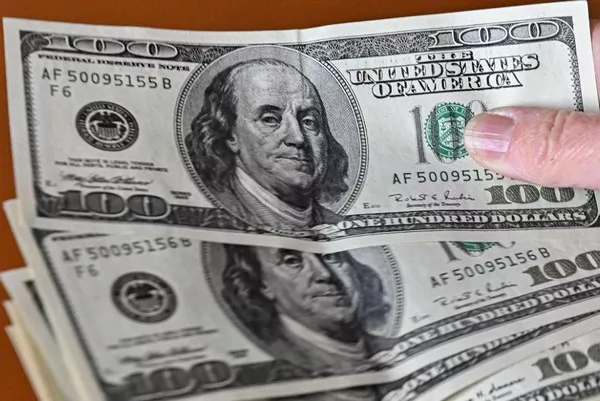The exchange rate between the United States Dollar (USD) and the South African Rand (ZAR) is a critical metric in the world of international finance and trade. As these two currencies are widely used for global transactions, understanding the dynamics of the Dollar to Rand exchange rate is of paramount importance to businesses, investors, and policymakers alike. In this article, we will delve into the factors that influence this exchange rate, its historical trends, and the implications it carries for various stakeholders.
Exchange Rate Basics
Before we explore the intricacies of the Dollar to Rand exchange rate, it is essential to comprehend the fundamentals of exchange rates. An exchange rate represents the relative value of one currency in comparison to another. In the case of the Dollar to Rand exchange rate, it specifies how many South African Rands one US Dollar can purchase. This rate fluctuates daily and is influenced by a multitude of factors.
Factors Influencing the Dollar to Rand Exchange Rate
a. Economic Indicators
Economic indicators play a significant role in determining exchange rates. Key indicators include GDP growth, inflation, interest rates, and employment figures. If the U.S. economy is thriving and the South African economy is facing challenges, the Dollar may strengthen against the Rand, leading to an increase in the exchange rate.
b. Interest Rates
Interest rates set by central banks have a substantial impact on exchange rates. Higher interest rates in the United States attract foreign capital, as investors seek better returns on their investments. This influx of capital can lead to an appreciation of the Dollar relative to the Rand, causing the exchange rate to rise.
c. Inflation Rates
Inflation erodes the purchasing power of a currency. A higher inflation rate in South Africa compared to the United States can lead to a depreciation of the Rand against the Dollar. Investors often favor currencies with lower inflation rates, making the Dollar more attractive in such situations.
d. Political Stability
Political stability is a critical factor in determining exchange rates. A country with a stable political environment is generally more attractive to foreign investors, which can lead to a stronger currency. On the contrary, political instability can result in a weaker currency, like the Rand.
e. Trade Balance
The trade balance, which measures the difference between exports and imports, can influence exchange rates. If a country consistently imports more than it exports, it may experience a decrease in its currency’s value. In the case of South Africa, a trade deficit can put pressure on the Rand.
Historical Trends
The Dollar to Rand exchange rate has experienced significant fluctuations over the years. These fluctuations have been influenced by a combination of domestic and international factors. Let’s take a brief look at the historical trends to gain a better understanding of how these factors have impacted the exchange rate:
a. Post-Apartheid Era
South Africa’s transition to democracy in the early 1990s marked a turning point in the country’s economic history. During this period, the Rand was relatively weak due to political uncertainty and international sanctions. The exchange rate surged, and inflation was high.
b. Economic Reforms
In the late 1990s, South Africa embarked on a series of economic reforms and liberalization efforts. This period marked the start of a more stable Rand. However, the exchange rate still experienced some fluctuations due to global economic events.
c. The 2008 Financial Crisis
The global financial crisis in 2008 had far-reaching effects on exchange rates worldwide. The Rand faced significant depreciation against the Dollar during this time, reflecting the international turmoil.
d. Post-Financial Crisis Recovery
In the years following the financial crisis, the Rand gradually recovered. Strong global demand for South African commodities, such as gold and minerals, played a pivotal role in bolstering the currency.
e. Recent Developments
In recent years, the Rand has experienced both depreciation and appreciation against the Dollar. The exchange rate has been affected by a combination of domestic economic factors, global market trends, and shifts in investor sentiment.
Implications for Stakeholders
a. Businesses
For businesses engaged in international trade, the Dollar to Rand exchange rate has significant implications. A stronger Rand can make South African exports more expensive for foreign buyers, potentially reducing competitiveness. Conversely, a weaker Rand may boost exports but can increase the cost of imported goods and raw materials.
b. Investors
Investors, both domestic and foreign, closely monitor exchange rates as they impact investment decisions. A strong Rand can lead to attractive investment opportunities in South Africa, while a weaker Rand may make foreign assets more appealing to South African investors.
c. Policymakers
Central banks and governments play a crucial role in influencing exchange rates through monetary policy and fiscal measures. Policymakers often aim to strike a balance between maintaining exchange rate stability and promoting economic growth.
d. Tourists
Tourists planning to visit South Africa need to consider the exchange rate. A favorable exchange rate can make travel more affordable, while an unfavorable rate may result in higher costs for foreign visitors.
Conclusion
The Dollar to Rand exchange rate is a dynamic and influential economic indicator that impacts various aspects of the global economy. Understanding the factors that influence this rate, historical trends, and the implications for businesses, investors, and policymakers is essential for informed decision-making. As with any currency pair, the Dollar to Rand exchange rate is subject to fluctuation, making it crucial for stakeholders to stay informed and adapt to changing market conditions.


